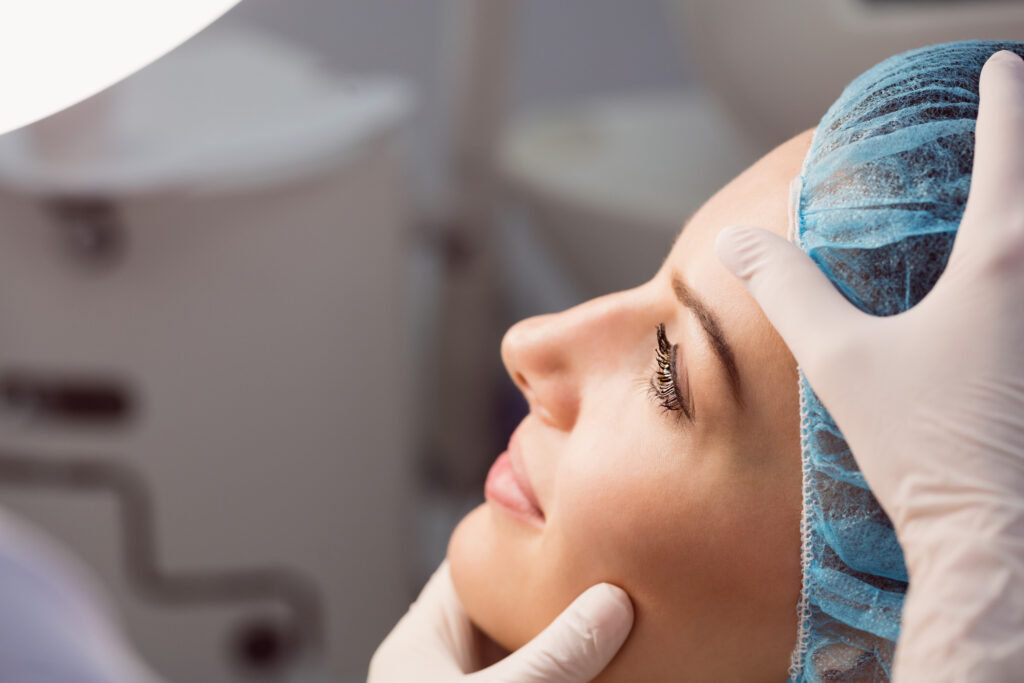Flights after nose surgery can feel intimidating, but the good news is that many patients find it safe to travel by plane within days of their procedure. According to a peer reviewed study of 120 septorhinoplasty patients, those who flew back home 48 hours after surgery experienced no extra pain, swelling, or readmissions compared to those who stayed local.
In this guide, Dr. Cem Altindag, the best rhinoplasty surgeon in Istanbul, will walk you through how soon you can fly after nose surgery, whether air travel post nose surgery is okay at three weeks, and what you can do to stay comfortable on board. We’ll draw on clinical data and surgeon insights so you have clear, practical advice.
By the end, you’ll know exactly when to book your ticket, how to prepare, and what to watch for so you can focus on enjoying your trip, not worrying about your nose!
Contents
How soon can I fly after nose surgery?
Most surgeons now agree that healthy patients can consider air travel after rhinoplasty as early as 48 hours post operation, provided packing and splints are removed and there are no complications. The Turkish Journal of Ear Nose and Throat published a study showing no difference in pain, bruising, or early complications between patients who flew 48 hours after open septo-rhinoplasty and those who stayed local .
That study involved 60 patients flying from London to Istanbul (about a 3 hour 40 minute flight) and 60 local patients. Both groups stayed in hospital for 24 hours, then left with standard pain control, saline spray protocols, and no extra dressings or medications. Importantly, none needed readmission or experienced late onset issues within their first year of follow-up .
Even so, every surgeon has their own comfort level. Before you book flying after rhinoplasty, confirm that your nasal packing is out (usually day 6), your splints are removed, and your doctor has cleared you for travel. This ensures you’re not risking tissue shifts or unexpected bleeding.
Can I travel 3 weeks after rhinoplasty?
By three weeks post-op, most of your bruising and initial swelling have faded. That makes flying after nose surgery on short- to moderate-haul flights far more comfortable. In fact, many patients report feeling almost back to normal at this point.
Around day 14–21, the thick edema that can make your nose feel blocked loosens up, so breathing through your splints, and later through your nasal passages, becomes much easier . You may still notice slight puffiness around the bridge or tip, but it won’t usually interfere with cabin pressure changes.
If you’re planning air-travel post nose surgery at three weeks, give yourself extra layover time. Stretch your legs often, keep a saline spray handy, and request a pillow that lets you keep your head slightly elevated. These small steps help you land feeling rested, not stuffy.
How to prepare for air-travel post nose surgery

Good planning makes all the difference. Here’s a quick checklist for air travel after rhinoplasty:
- Saline nasal spray: Use 2–4 times per day to keep passages clear.
- Pain medication: Pack any prescription or over-the-counter meds your surgeon recommends.
- Compression ice packs: If allowed, cold packs can reduce any lingering swelling during a layover.
- Loose, comfortable clothing: Avoid anything that might press on your nose or create discomfort.
- Doctor’s letter: A brief note confirming your procedure date and packing removal can smooth security checks.
Most patients don’t need DVT prophylaxis for flights under six hours, but if your journey is longer, ask about compression socks or in-flight exercises. Keep moving every hour, stand, walk, and do gentle ankle rotations to boost circulation.
Finally, label your carry-on bag as “medical supplies” if you’re carrying ice packs or saline. That way, security officers know why you have liquids and cold packs in your bag.
Understanding cabin pressure and in-flight comfort
Commercial cabins are pressurized to the equivalent of about 8,000 feet above sea level. While septo-rhinoplasty isn’t as sensitive to pressure changes as middle-ear surgeries, a newly healed nose can still feel a bit tight or stuffy during ascent and descent.
To ease any pinch:
- Swallow often or gently yawn to help your Eustachian tubes adjust.
- Avoid pressing your face against the window or headrest, this can irritate tender skin.
- Use nasal strips if your surgeon approves. They pull open the nostrils and can ease breathing.
Stay well hydrated. Dry cabin air can thicken mucus and make your nose feel blocked. Drink plenty of water before and during your flight, skip the dehydrating drinks like coffee and alcohol.
Common concerns and questions about flights after nose surgery
Will my nose bleed?
Minor oozing is possible up to a week after packing removal, but significant bleeding is rare once your splints are out . If you spot any fresh blood, sit upright, apply a cold compress, and contact your surgeon.
What if I feel dizzy or light-headed?
Lightheadedness usually comes from dehydration or low blood sugar. Eat a light snack and sip water. If it persists, let a flight attendant know, they can provide oxygen if needed.
Can I wear glasses or sunglasses?
Yes, once your bridge is stable (often 10–14 days post-op). Choose lightweight frames and sit straight in your seat when you put them on or take them off to avoid pressure on the bridge.
These simple steps answer most questions and can prevent small worries from becoming distractions on your trip.
When to consult your surgeon before flying

Your surgeon is your best resource. Reach out before booking if:
- You still have nasal packing or splints in place.
- You’ve had recent nosebleeds or persistent congestion.
- You’re planning a very long flight (over six hours).
Surgeons often schedule follow-ups at one week, one month, and three months. If your one-week check falls right before your travel date, ask to move it up by a day. That way, you’ll get a clean bill of health and any final tips for a smooth flight.
If you had a revision rhinoplasty or other nasal procedures (like turbinate surgery), your recovery timeline might differ. Always get explicit clearance in writing before air-travel post nose surgery.
Conclusion
When timed right, flights after nose surgery are not only possible, they can be comfortable and complication free. A landmark study found that flying 48 hours after open septo-rhinoplasty carried no extra risks for healthy patients . By three weeks, most swelling is gone and you’re almost back to normal.
Plan ahead: confirm your surgeon’s approval, pack wisely, and stay hydrated. With these steps, your air travel after rhinoplasty can be as simple as any other trip, letting you focus on the adventure ahead instead of your recovery.
Safe travels and happy flying!


